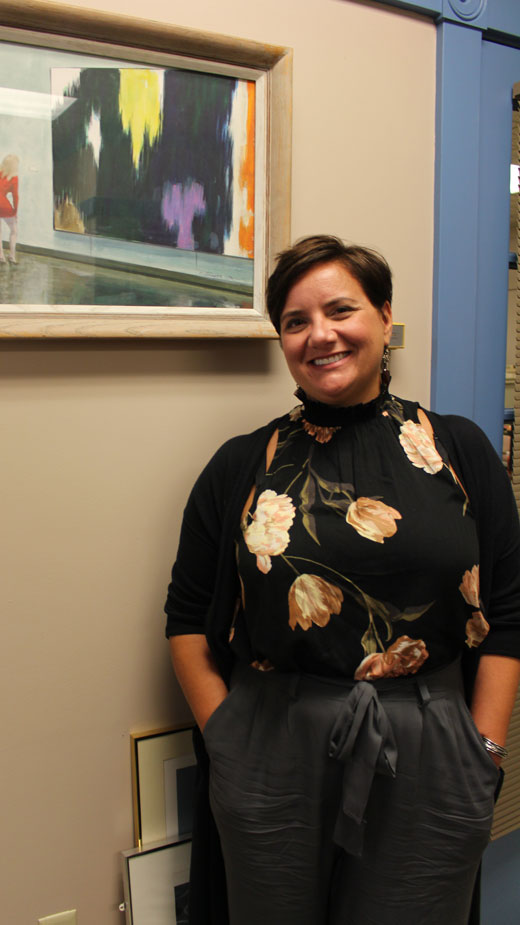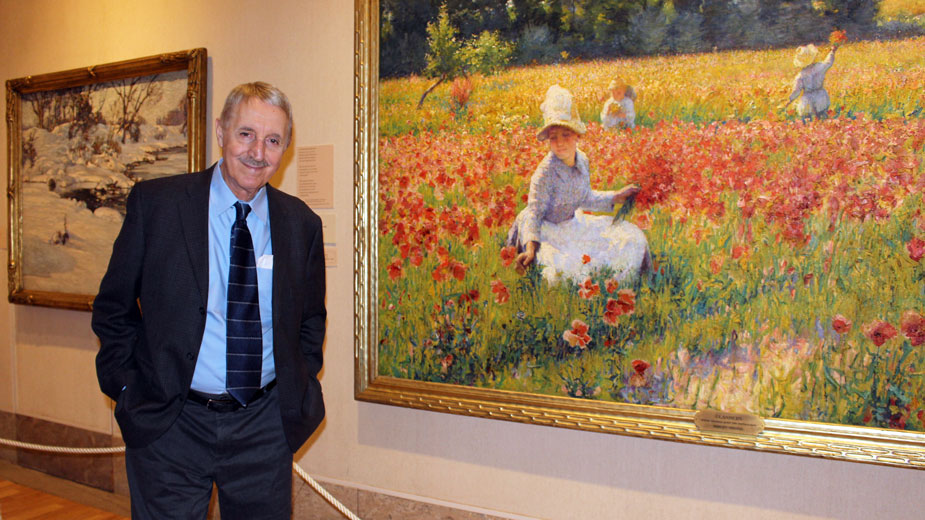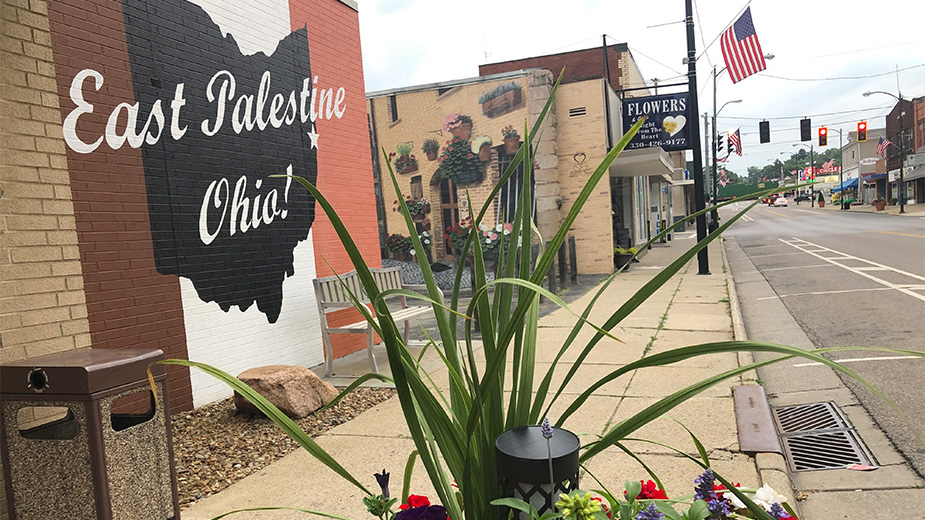Business at The Butler Is Its Own Art
YOUNGSTOWN, Ohio – Early morning visitors to The Butler Institute of American Art might catch a few masonry workers tending to the grout on the facade of the building. They’re working on the final phase of a four-year capital project to make needed repairs to the building.
Past phases included the recaulking of metal coping joints, marble joints and aluminum windows. All told, the project costs some $350,000, says development director Rebecca Davis. Donations from area nonprofits, including the Youngstown Foundation, J. Ford Crandall Foundation, Walter E. and Caroline Watson Foundation and others, funded the project, she says.
Writing grants and courting funds from area foundations and corporations are among Davis’ primary responsibilities. Contributed income accounts for up to 45% of the museum’s annual revenue, and includes planned gifts and state, federal, foundation and corporate grants, as well as memberships, individual giving and major gifts, she says.
Two of the biggest components are through the Ohio Arts Council and the state capital budget, the latter of which must go toward capital improvements or new equipment, and not repairs or general maintenance. Davis is preparing the museum capital budget proposal for the fall, she says.
“We’re not quite sure exactly what we’re going to be asking for yet,” she says. “We may be asking for money for an expansion.”
Looking ahead, Davis says The Butler is planning a major update for its environmental-control system, which is important for preserving the artwork. “That will probably be part of our capital-budget ask,” she says.
In 2018, The Butler received $500,000 in state capital-budget funding, and $279,000 the year before. Past projects funded by state-capital monies include replacing the historic passenger elevator, adding air-conditioning to The Butler North education sanctuary, installing LED lighting and replacing the turnaround driveway to make it more accessible.
With any grant received, The Butler must measure and report the effect of the efforts, Davis says. Impact is typically measured by increased foot traffic and firsthand accounts, she says. In a report Davis is currently completing, she plans to reach out to Kevin Llewellyn, who had a retrospective exhibition at The Butler for the past year.
“I know I can take from his social media just how important it was for him having this exhibition here,” she says. “He’s from Columbiana; he’s in Los Angeles now. It had a huge impact on him personally, I know from just what he said in the media.”
Bringing in popular artists is critical to the ability of The Butler to court funding, she says. Attracting artists such as Llewellyn, Kim Novak and John Mellencamp demonstrates the museum’s efforts to reach a cross-section of the community, she says.
“You have diverse exhibitions with diverse artists to bring in a diverse audience,” she says. “You might have Mellencamp coming in and you can pull in people that have never come to the museum, but they want to come and see his work because they love his music.”
Funding from the Ohio Arts Council is “most important” because it goes toward operational expenses, she says, “which is probably the hardest grants to get” because the arts make up “a small piece of the pie” for available funds for nonprofits. Thus, The Butler relies on investment income from its $25 million endowment fund for operations, Davis says.

Investment income from the fund makes up 45% of the annual revenues of the museum and accounts for a third of its $2 million budget, which includes the salaries of its 22 employees. Another 5% to 15% comes from earned income, which includes cafe and gift shop sales, education-class fees, museum rentals and the annual Holiday Craft Show & Sale.
To ensure The Butler maintains good stewardship of its endowment and other funds, director Louis Zona meets with the 40-member board of trustees five times each year to discuss all financial matters, as well as the collection, membership, development and planning, outreach and ethics.
“We have a fairly diverse board with several skill sets that help us manage that museum,” says Board President Thomas Cavalier. “We’ve been fortunate that we have a nice endowment that is conservatively managed. That provides some income to the museum.”
In the 33 years Cavalier has served on the board, “I can’t recall a time when we haven’t balanced our budget. Dr. Zona does an outstanding job in managing that museum,” he says. “He doesn’t present anything unless it’s something that would be beneficial to The Butler. And he’s got a good handle on our finances and knows what we can and cannot do,” he says.
Having a successful financial track record is important to ensure the museum exists in perpetuity, he says, because it demonstrates to donors that their contributions are well managed, he says.
“A lot of museums in the country have gone out of business because they haven’t been able to manage their expenses and get the support of the community,” Cavalier says. “If you start to run into financial trouble, I think your donors tend to back away, too. People want to be part of a successful operation and The Butler certainly has been successful.”
The Butler hasn’t had to touch the principal of its endowment, relying instead on fundraising, contributions and membership fees, he says. Four banks help manage the investments of the fund, which has increased over the years, he says.
“Our endowment, we look at it as being very sacred,” Cavalier says. “In the past, when we’ve raised money, we’ve added to the endowment.”
Membership fees bring in “a couple hundred thousand dollars we can always count on,” Zona says. Some 300 comprise the Trustees Circle, which ranges from $300 to $3,000 in annual fees and includes a number of perks, including discounts at the gift shop and for art classes, reciprocal privileges with 14 Ohio art museums, recognition on a plague in Beecher Court, invitations to exclusive events at The Butler and other perks. About 1,000 make up the general membership, which costs between $50 to $100 annually, he notes.
Early in his career at The Butler, Zona learned the importance of maintaining strong connections with local business owners and influencers. The Butler has received some major gifts that were part of someone’s estate.
“You can’t count on that, but you try to be a good citizen. You try to make the museum accessible to everyone. And I think ultimately it pays dividends,” Zona says.
In the 1980s when Zona wanted to raise money for what would become the West Wing addition, a colleague recommended he speak with Chuck Schaff, a local business owner.
“He came in to walk around The Butler with me and he said, ‘Why do people come here?’ ” Zona recalls with a laugh. “I said, ‘Chuck, some people really like art.’ He said, ‘I’ll help you.’ ”
Together, Zona and Schaff raised $4 million for the expansion project that was completed in 1987. The expansion includes the Hopper Research Library, Sweeney Children’s Gallery, Donnell Gallery of Sports Art and Beecher Court, as well as a kitchen and downstairs storage space, he says.
The Butler hosts about 120,000 visitors each year, a large number of whom are children. And while The Butler has become “quite a hot spot for teachers,” Zona recognizes the need to attract younger patrons.
“Every time we have a party for the Trustees Circle to thank them, there’s always somebody in the group who will come up to me and say, ‘Notice that all the hair is gray here?’ ” he says.
To attract the next generation of patrons, The Butler created its Young Collectors Group three years ago, Davis says. The museum hosts three annual events for residents 25 to 45 years old – some of whom have never been to The Butler – to get them familiar with the museum and drive an appreciation for the arts and collecting.
One event focuses on prints “because that’s a way to get into collecting,” Davis says. The event included speakers such as Jeff Byce, real estate broker, auctioneer and founder of ByceAuction Ltd., to discuss art auctions, and a representative from Sotheby’s to discuss how valuations work. In addition, local artists attend the events to sell their work and explain their processes.
The Butler has also partnered with Column & Stripe, the young friends group of the Cleveland Museum of Art, Davis says. The partnership brings patrons from Cleveland to tour The Butler.
“They were very impressed,” Davis says. “Some of them have been here before and they just wanted the tour with Dr. Zona.”
To keep to the founder’s vision of having a museum accessible to everyone, Zona wants to add a gallery of African-American art in the near future.
“In our community, 50% of the people that live here are African-American,” he says. “I’m seeing more and more African-American families coming through The Butler.”
Such an expansion would cost anywhere from $1.5 million to $2 million, “so, at this point it’s a pipe dream,” he says. “But we’ll see.”
More Butler 100th Anniversary coverage
- Honoring 100 Years of The Butler (video)
- 3 Minutes With Dr. Louis Zona, Executive Director, Butler Institute of American Art (video)
- Framing History Is Butler’s Art
- Learning Is Lifelong at The Butler Institute of Art
- Conservation and Archiving Saves Butler’s Treasures
- The Butler Paints a Paper Trail to Display Exhibits
Pictured: Louis Zona’s favorite painting at The Butler is Robert Vonnoh’s “In Flanders Field Where Soldiers Sleep and Poppies Grow.”
Copyright 2024 The Business Journal, Youngstown, Ohio.



